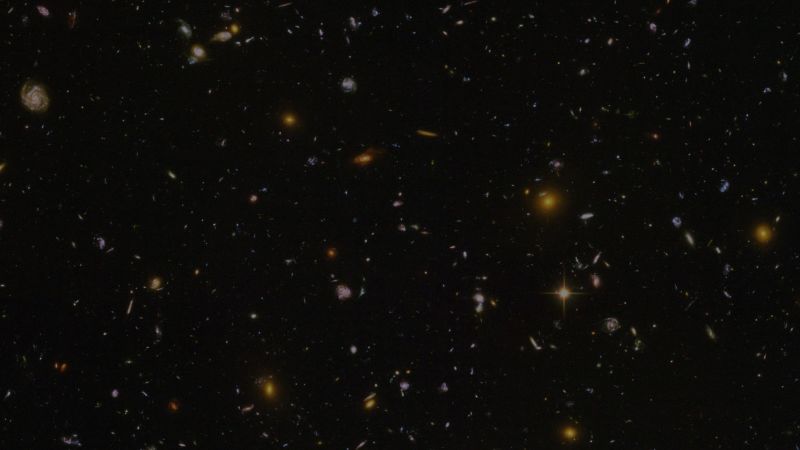Two powerful NASA telescopes have detected the oldest and most distant black hole ever found.
Data captured via energetic X-rays by the Chandra X-ray Observatory and James Webb Space Telescope has helped astronomers spot the signature of a growing black hole within the early universe just 470 million years after the big bang, which occurred 13.8 billion years ago.
The discovery, described in a study published Monday in the journal Nature Astronomy, may help astronomers piece together how some of the first supermassive black holes formed in the cosmos.
“We needed Webb to find this remarkably distant galaxy and Chandra to find its supermassive black hole,” said lead study author Akos Bogdan, in a statement. “We also took advantage of a cosmic magnifying glass that boosted the amount of light we detected.” Bogdan is an astrophysicist at the Harvard-Smithsonian Center for Astrophysics in Cambridge, Massachusetts.
He was referring to an effect called gravitational lensing, which occurs when closer objects — in this case a galactic cluster — act like a magnifying glass for distant objects. Gravity essentially warps and amplifies the light of distant galaxies in the background of whatever is doing the magnifying, enabling observations of otherwise invisible celestial features.
Astronomers detected the black hole in a galaxy called UHZ1. At first glance, the galaxy appeared in the same direction as a cluster of galaxies known as Abell 2744, which is located about 3.5 billion light-years from Earth. But data collected by the Webb telescope showed that UHZ1 is actually much farther away and located beyond the cluster at 13.2 billion light-years from Earth.
A light-year, equivalent to 5.88 trillion miles, is how far a beam of light travels in a year. Given the distance between Earth and the objects from the early days of the universe, when telescopes like Webb observe this light, it’s effectively like looking into the past.
The team used the Chandra Observatory to detect superheated gas releasing X-rays within UHZ1, the telltale sign of a supermassive black hole growing in size.
The detection was made possible by the Abell cluster of galaxies, which intensified the light of the UHZ1 galaxy and the X-rays released by the black hole by a factor of four.
Decoding a cosmic mystery
Astronomers think the discovery will help them to better understand how supermassive black holes appeared and reached their monstrous masses so soon after the beginning of the universe.
The researchers want to know whether the giant celestial objects formed when massive clouds of gas collapsed or if they resulted from the explosions of the very first massive stars.
“There are physical limits on how quickly black holes can grow once they’ve formed, but ones that are born more massive have a head start. It’s like planting a sapling, which takes less time to grow into a full-size tree than if you started with only a seed,” said Andy Goulding, research scholar in astrophysical sciences at Princeton University in New Jersey.
He is a coauthor on the Nature Astronomy paper and lead author of another paper on the UHZ1 galaxy published in September in The Astrophysical Journal Letters.
The team reporting its results in the Nature Astronomy paper had discovered that the distant black hole’s mass is similar to the entire mass of all of the stars within the galaxy that hosts it. The mass falls somewhere between that of 10 million and 100 million suns, judging by the brightness and energy of the X-rays emitted by it, the researchers said.
Potential black hole theory
Typically, black holes located at the centers of galaxies only have about 0.1% the mass of the stars within their host galaxy.
The unusual black hole could be an “Outsize Black Hole” that formed when a huge cloud of gas collapsed, as theorized in 2017 by Priyamvada Natarajan, a coauthor on both studies and the Joseph S. and Sophia S. Fruton professor of astronomy and professor of physics at Yale University in New Haven, Connecticut.
“We think that this is the first detection of an ‘Outsize Black Hole’ and the best evidence yet obtained that some black holes form from massive clouds of gas,” Natarajan said. “For the first time we are seeing a brief stage where a supermassive black hole weighs about as much as the stars in its galaxy, before it falls behind.”







































